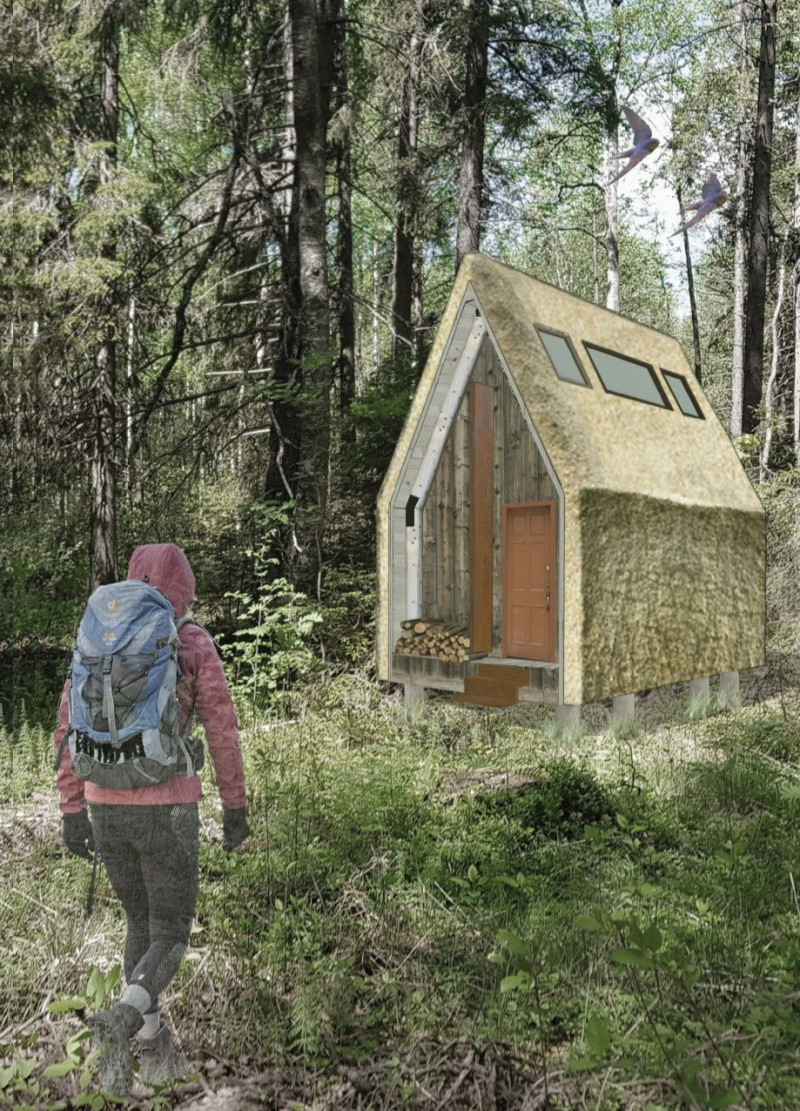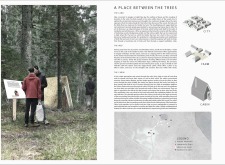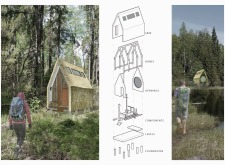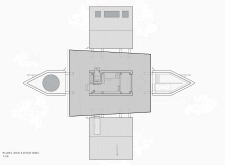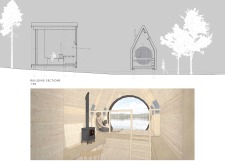5 key facts about this project
The Ozolini Tea Farm is situated in a picturesque wooded area that encourages exploration and self-reflection. It serves as a tea workshop and a meditation space, focusing on the relationship between the built environment and nature. The design aims to deepen visitors’ connection to the land, offering a setting for both communal engagement and solitary contemplation.
The Land
The rugged terrain of Ozolini Tea Farm plays a central role in the overall experience. This landscape is not just a backdrop; it is integral to the retreat’s purpose. Visitors can find tranquility and opportunities for meditation within its natural beauty. The design intends to create an environment where individuals can discover both the land and themselves, fostering a strong sense of place.
The Web
Interconnected trails meander through the farm, guiding visitors on their journey. These paths allow for personal exploration while also encouraging group interaction. Starting from a communal fire pit, the design promotes conversation and sharing of experiences before visitors branch off on their own excursions. Along the way, information signs educate guests on the history and methods of tea cultivation, enriching their time spent in this setting.
The Cabin
The cabin serves as the focal point of the retreat, designed to facilitate meditation and reflection. With a processional layout, visitors ascend through different levels as they explore the interior. At the top, a meditation platform offers an inviting space to connect with nature. The carefully placed aperture frames views of the landscape, encouraging quiet contemplation.
Local materials, including timber, thatch, and pine, form the cabin's structure, allowing it to blend into its surroundings. These choices highlight the connection between the facility and its environment, embracing traditional Latvian architectural elements.
The operable aperture enhances the design by allowing adaptability to changing weather conditions. Visitors can enjoy fresh air and changing views, creating an immersive relationship with the outdoors. The cabin becomes a retreat for reflection while remaining tied to the landscape that surrounds it.


